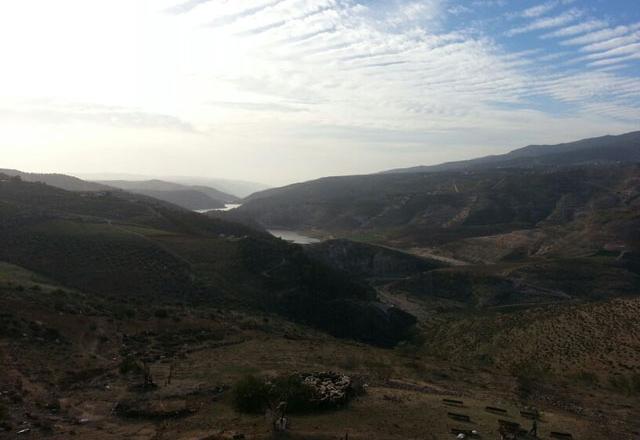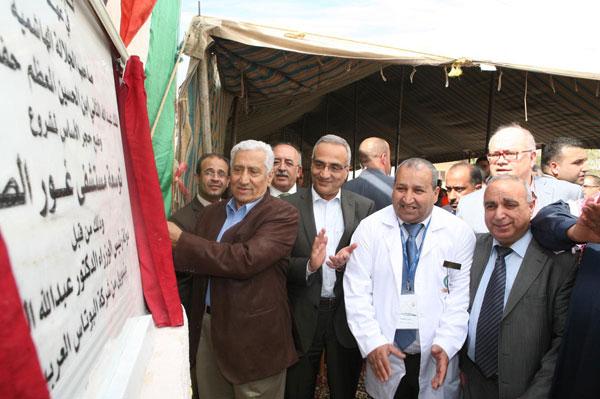You are here
Ibn Hammad Dam to provide drinking water for southern region residents
By Hana Namrouqa - Feb 01,2014 - Last updated at Feb 01,2014

AMMAN — Construction work on a new dam in Karak Governorate has commenced, according to government officials.
The 4-million cubic metre (mcm) Ibn Hammad Dam, to be built at a cost of JD26 million, will provide drinking water for residents of the southern Karak and Tafileh governorates among other towns in the region, according to Water Minister Hazem Nasser.
Under an agreement signed between the ministry and the Arab Potash Company, the former will provide the company with 2.5mcm per year for industrial use over 12 years at preferential prices, while the latter will fund the construction of the dam, a ministry statement said.
In addition to providing drinking water, the dam will also develop the surrounding land and recharge underground water, Jordan Valley Authority Secretary General Saad Abu Hammour said.
Named after the Ibn Hammad Valley, the 52-metre-high dam will help meet the increasing demand for water in the country, according to Water Ministry Spokesperson Omar Salameh, who noted that construction will be completed within three years.
A total of 10,000 people reside in villages scattered across Ibn Hammad Valley, which attracts hundreds of tourists from across the world every year.
The 86-square-kilometre valley, announced in 2010 as a special conservation area, stretches from the mountains of Karak to the Dead Sea, at altitudes ranging between 800 metres above and 400 metres below sea level.
Dams, though expensive to build, are vital for the Kingdom to secure its water needs, according to experts.
The Kingdom’s 10 major dams are: King Talal, Wadi Al Arab, Sharhabil, Kafrein, Wadi Shuaib, Karameh, Tannour, Waleh, Mujib and Wihdeh.
Jordan, which is considered the world’s fourth water poorest country, suffers an annual water deficit of 500mcm, while per capita share of water does not exceed 150 cubic metres annually, well below the water poverty line of 500 cubic metres per year.
According to official figures, 91 per cent of the Kingdom’s total area of 97,000 square kilometres is arid land with an annual average rainfall of 50-200 millimetres (mm), while 2.9 per cent is categorised as semi-arid with an annual average rainfall of 400-580mm.
Related Articles
The 4-million cubic metre (mcm) Ibn Hammad Dam in Karak Governorate is expected to be completed within three years, a government official said on Tuesday.
The Ministry of Water and Irrigation on Saturday announced a water harvesting plan designed to raise rainwater storage in dams by over 25 per cent within five years.
AMMAN — Prime Minister Abdullah Ensour on Thursday checked on the progress in the construction of Ibn Hammad Dam in Karak as part of a field


















